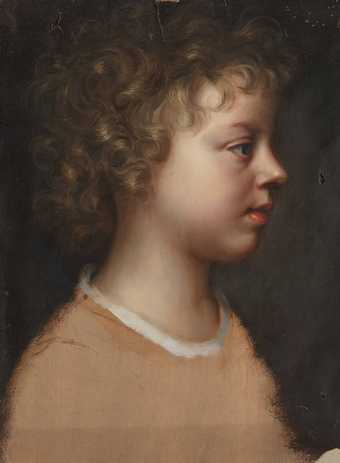
Mary Beale
Sketch of the Artist’s Son, Bartholomew Beale, in Profile
(c.1660)
Tate
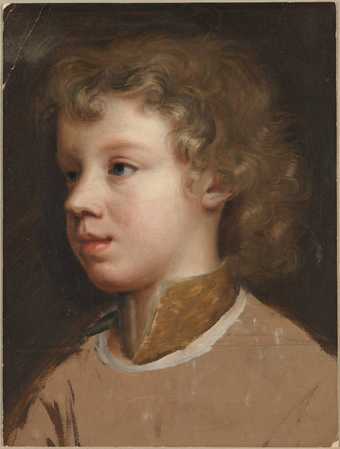
Mary Beale
Sketch of the Artist’s Son, Bartholomew Beale, Facing Left
(c.1660)
Tate
There is a certain radicalism in the simplicity of the approach to the new displays at Tate Britain. The works are not organised by the traditional art historical devices of movements, genres or themes. Instead, one gets a more accurate view of the range of art that was being produced at any one moment in time. This chronological circuit has been developed by a team of curators representing different period specialisms. All were surprised at how difficult it was to dispense with deeply embedded art historical conventions. The claim for radicalism stems from the recognition that the art history of our past displays was not especially historical, insofar as history, as a passage of time, was subordinate to other forms of taxonomy such as style, genre and movement.
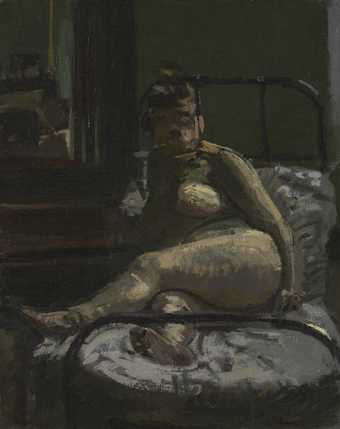
Walter Richard Sickert
La Hollandaise
(c.1906)
Tate
It came as a revelation to some to find that if approached in a strictly chronological way, Gainsborough’s early landscapes belong not with his rich full-length portraits but alongside the work of Hogarth. Or that Lawrence Alma-Tadema’s A Favourite Custom 1909, the epitome of Victorian art, actually post-dates Walter Richard Sickert’s La Hollandaise c.1906, a modernist icon in its low-life realism. Unusual juxtapositions are highlighted, some subtle, some dramatic. The aristocratic portraits that dominate British art of the Tudor and Stuart periods are leavened by religious and decorative painting and the advent of genres and landscape subjects. Later, the stark contrast between Ben Nicholson’s early abstract composition and Alfred Munnings’s depiction of the royal party at Ascot, both from the mid-1920s, suggests how radical abstraction would have seemed to many at that time. If these juxtapositions are about difference and contrast, that of George Stubbs’s Mares and Foals in a River Landscape 1763-8, Joshua Reynolds’s Three Ladies Adorning a Term of Hymen 1773 and Benjamin West’s Pylades and Orestes Brought as Victims before Iphigenia 1766 reveal the influence of classic friezes on British art of the 1760s. New meanings are also thrown up: Arthur G. Walker’s ivory and marble Christ at the Whipping Post, from the early 1920s, might be considered a retrogressive piece of academicism, but when seen alongside Charles Sargeant Jagger’s war memorial, No Man’s Land 1919–20, the image of Christ’s suffering takes on a specific historical resonance.
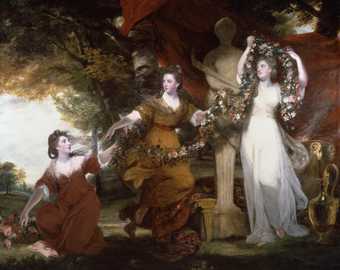
Sir Joshua Reynolds
Three Ladies Adorning a Term of Hymen
(1773)
Tate
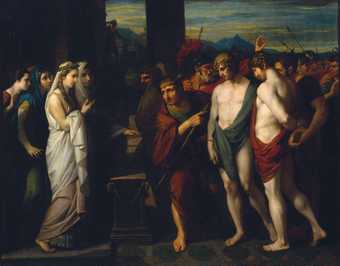
Benjamin West
Pylades and Orestes Brought as Victims before Iphigenia
(1766)
Tate
One advantage of this approach is that it allows not only for the inclusion of the major figures of British art, but also for the display of different phases of their careers. So rather than be confined to a single period or theme, the earlier and later work of such artists as Reynolds, Sargent or Bacon can be seen in the context of the art made by others, of different generations, at the same time. In making the selection of more than 500 works, we deliberately sought to balance such famous names and familiar works with artists, subjects and styles that would be less expected. We also wanted to draw out certain threads that might be seen to run through the chronological circuit, such as the development of landscape imagery or the impact of migration on British art, and we endeavoured to demonstrate the rich contribution of women artists, from Mary Beale (whose double portrait of her son was recently acquired by Tate) in the 1660s, to the present day. In addition to paintings and sculpture being shown together throughout, we represent a range of media with a room dedicated to film and video projections and two rooms featuring photographs and other works on paper.
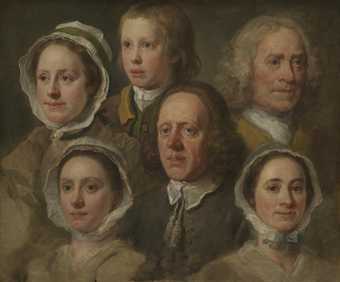
William Hogarth
Heads of Six of Hogarth’s Servants
(c.1750–5)
Tate
Using the metaphor of a ‘walk through British art’ would be apt. The gallery and the collection are of a scale such that it is not impossible to undertake the full extent of the journey from the Reformation to the twenty-first century, whether at a gentle ramble or a sprint. The deceptive simplicity of the chronology allows the visitor to stop wherever they choose and, if they do not fancy the full journey, to enter the history at the period they wish to see. The installation has been designed to make the best use of the architecture of the galleries, affording clear vistas to iconic works for better orientation through the space and through history. While the later end of the chronology will change regularly, the larger part will be more or less permanent, answering the concerns of those frustrated by the frequent movement of favourite works.
A number of galleries are given over to In Focus displays that will change regularly. These cover the historical range of the collection and a variety of media, concentrate on particular artists or themes and draw on new research, often working with external specialists as well as Tate curators. In the opening season this spring, they include rooms considering the establishment of a national school of art in the eighteenth and nineteenth centuries, a detailed look at Constable’s A Cornfield c.1817, the presentation of two silent movies alongside the Victorian paintings that inspired them, an exploration of the art education programme Basic Design from the 1950s and rooms dedicated to such artists as Keith Arnatt, Douglas Gordon and Rose Wylie. From the autumn, the In Focus displays will also include a new archive gallery.
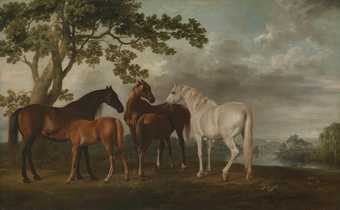
George Stubbs
Mares and Foals in a River Landscape
(c.1763–8)
Tate
The rethinking of the collection displays at Tate Britain is tied to the refurbishment of some of the historic galleries and the ongoing improvements to the main entrance and public facilities. An aspect of that project is the removal of decades of accretions and a return to the original forms and purposes of the building. Echoes of this thinking can be seen in the approach to the collection with an embracing of its anomalies and idiosyncrasies. In particular, we celebrate three artists with particular significance to Tate. The Clore Gallery has, once again, been dedicated to the work of J.M.W. Turner, for which it was built. We are also reinstating a Blake Room, a space that was for so long a much-loved feature of Millbank. Finally, for the first time Henry Moore is given a permanent presence in London with the establishment of two galleries showcasing his work.
Tate Britain houses the greatest collection of British art in the world. The rehang offers different ways of understanding its development, mixing permanence and change, broad evolutionary histories and tightly focused examinations of details, the contemporary with the near and distant past.
